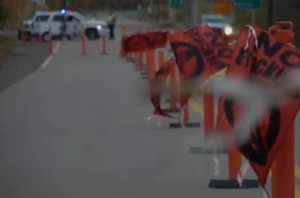
A St. Louis-de-Kent man is asking some very pointed questions about what really happened on October 17, 2013, when RCMP overran a shale gas protest camp at Rexton. During the raid, six police cars were burned. Using RCMP statements and pure imagination, some mainstream media outlets jumped to the dubious conclusion that protesters were responsible.
The day the RCMP attacked the Rexton protest camp, Roger Richard went to the site of the car burnings about 6:00 p.m. and took a long, close-up look at the vehicles. Richard’s inspection of the burned out cars led him to conclude the burnings were “staged” to discredit protesters.
“Those cars were stripped,” Richard says. “There were no burned computers, standard in RCMP cars, nor even the brackets that hold the computers in place.” He also looked in the trunk of a car and noted that there was no spare tire, tire rim, or jack.
Richard, a dentist, who has practiced dentistry in St. Louis de Kent for 34 years, says computers, spare tires and other equipment are standard equipment in RCMP cars. He says the absence of such standard equipment from the burned vehicles is only one indication that the burnings were staged.
Richard was also shocked that police took no special precautions with the crime scene. “Within hours of the crime, I was able to walk right up to the cars while they were still smoldering,” he says. “The area had not been sealed off with crime scene tape, and there were no police around at all.”
“I could have tampered with those vehicles, and some people obviously did,” Richard says. He recalls being at a nearby coffee shop a few days later and seeing another customer showing people a piece of one of the burned cars he had taken as a souvenir.
“Why didn’t they care about the scene of the crime?” Richard asks. “Why didn’t the police protect the crime scene from tampering? Why didn’t they immediately bring in their own arson experts to gather evidence?” He says that the RCMP’s willingness to let the evidence that might have been gathered be tampered with or removed by passers-by, or destroyed by the weather, is further evidence the burnings were staged.
For weeks after the car burnings, the remains of the cars sat unattended by the side of the road. During that time, rain and snowfall would have further obscured or ruined possible crime scene evidence.
Richard further noted that “parts of the engines were actually melted, and that indicates the fire burned at a very high temperature.” He suspects that an ” accelerant” of a type not available for public purchase was used on the cars. Accelerants are substance or mixtures used to rapidly accelerate the development of a fire, and are commonly associated with cases of arson.
Richard is a specialist who makes dental prostheses, and his training involved the melting of various metals to make alloys for dental prostheses. “I know something about the fact that metals melt at different temperatures, and I think something more than just ordinary gasoline was used on those cars.”
He also questions the RCMP’s account of what transpired that day. “We were told that the police were afraid and ran away from their cars,” Richard says, “but the many police officers all around the area were highly trained and heavily armed. What were they afraid of and, if they were afraid, why not get in the cars and simply drive away instead of abandoning their vehicles?”
Within days of the Rexton riot, Richard took his observations directly to the RCMP station in Richibucto. He was met with an angry response from officers who promptly invited him to leave. He has since shared his information with the Civilian Review and Complaints Commission Against the RCMP (CRCC) that is now investigating RCMP conduct in Kent County during the shale gas protests.
Richard also says he experienced “déjà-vu” during his inspection of the burned cars. He is old enough to remember that when Kouchibouguac National Park was formed, local Acadians living there had their land expropriated by governments, and protests were organized by people trying to defend their homes.
“There was a confrontation with the RCMP back then too,” Richard says, “and, just like Rexton, there was an RCMP car abandoned then too. It was pushed into the ditch and the demonstrators were blamed.”
Richard strongly suspects that protesters at the Rexton camp have been wrongly blamed for what was, in reality, a staged event designed to discredit them. Many people here want answers to the kind of pointed questions Richard is asking.
The Civilian Review and Complaints Commission (CRCC) Against the RCMP is currently investigating RCMP conduct in Kent County during shale gas protests here. Anyone who wishes to submit any evidence to the inquiry and/or share their experiences and perceptions of RCMP conduct during those protests, is invited to e-mail the CRCC and its Senior Reveiwer/Analyst Rosemary Morgan at: reviews@crcc-ccetp.gc.ca


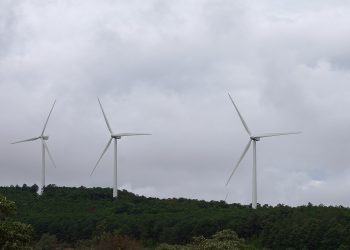
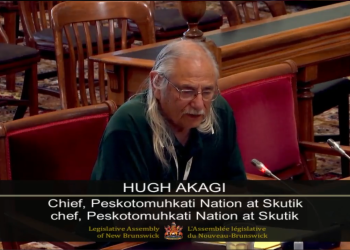
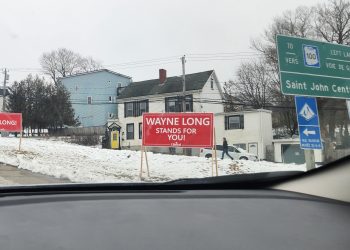
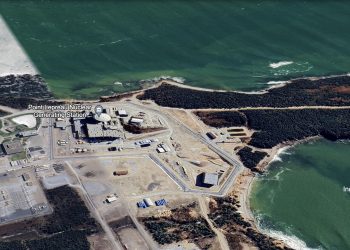


![Tenants target Moncton-area landlord, call for government to end ‘rent control loopholes’ [video]](https://nbmediacoop.org/wp-content/uploads/2025/10/JohnskyOct172025-120x86.jpg)

